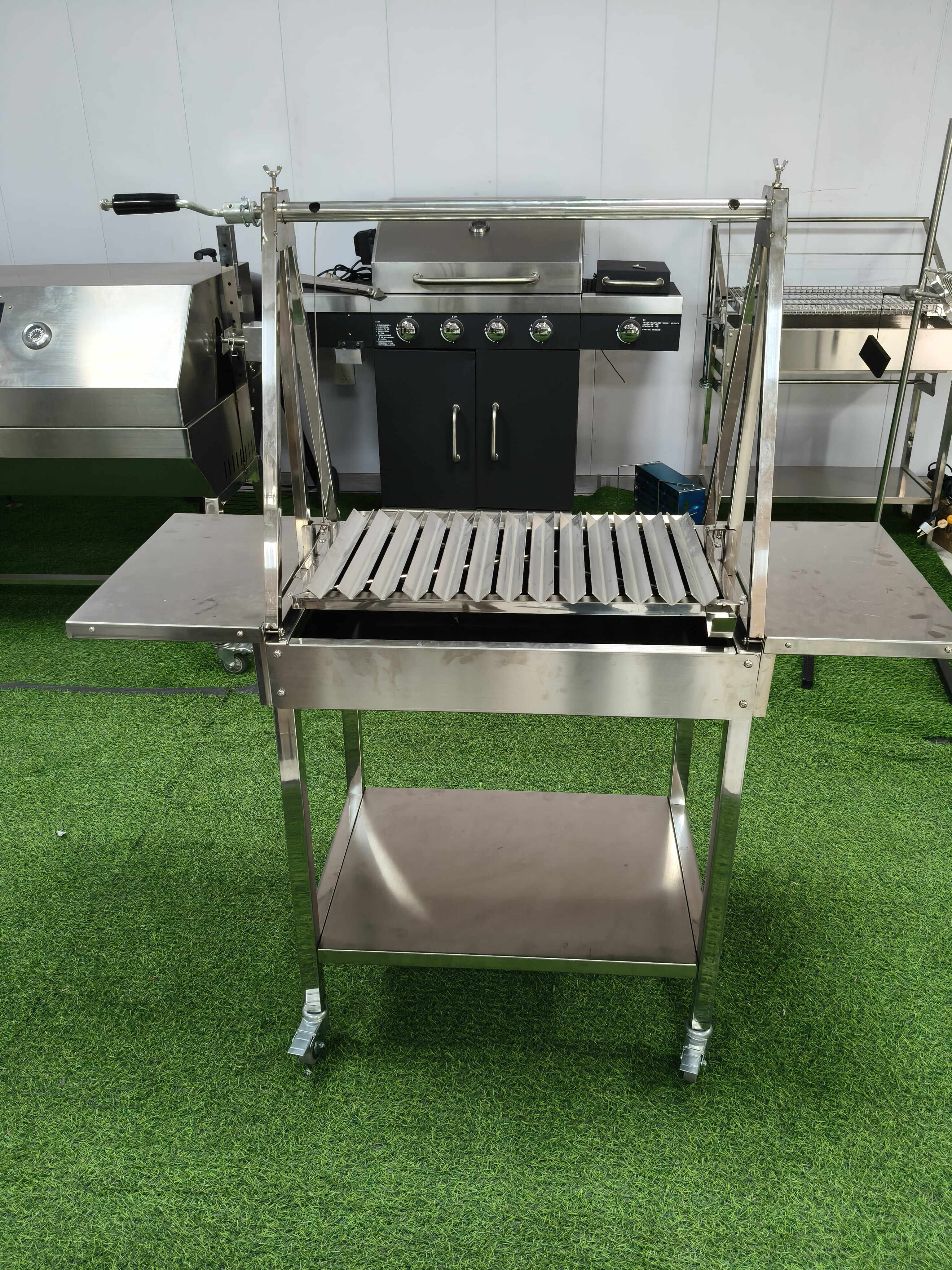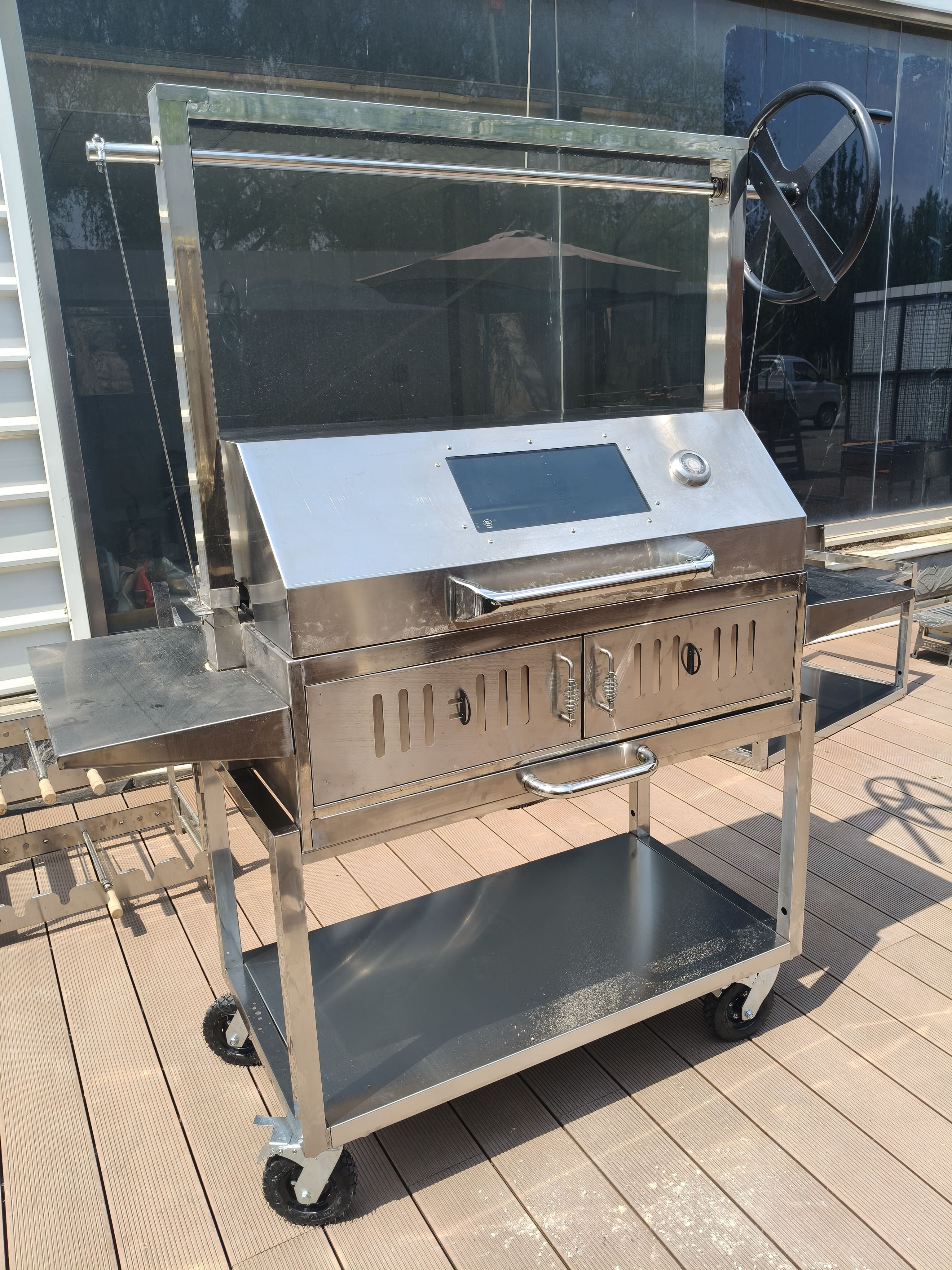The Best Barbecue Grills for Beginners: A Beginner's Guide
Starting with barbecue grills can feel overwhelming—there are so many types, sizes, and features. But for beginners, the best barbecue grills are simple to use, easy to clean, and forgiving of mistakes. They let you focus on learning the basics (like cooking burgers or chicken) without struggling with complicated setups. Let’s break down the top barbecue grills for beginners, why they work, and how to choose the right one.
1. Gas Grills: The Easiest Choice for Beginners
Gas grills are the most popular for new grillers. They’re quick to start, easy to control, and require minimal cleanup—perfect if you want to skip the hassle of learning to manage fire.
Top Pick: Weber Spirit II E-310
- Features: 424 square inches of cooking space (fits 10 burgers), 3 burners, built-in thermometer, and foldable side shelves.
- Why it’s great for beginners: Lights with a push button (no matches needed). Burners are easy to adjust—turn one to high for searing, another to low for veggies. The thermometer helps you avoid overcooking.
- Bonus: Weber’s simple design makes cleaning easy—grates lift out to scrub, and a drip tray catches grease.
Runner-Up: Char-Broil Performance 300
- Features: 300 square inches of space, 2 burners, and a porcelain-coated grill surface (resists rust and food sticking).
- Why it’s great: Affordable and even simpler than the Weber. Good for small families or those with limited patio space.
2. Electric Grills: Perfect for Small Spaces
If you live in an apartment or have strict rules about gas/charcoal, electric grills are a great backup. They plug into an outlet and work indoors or outdoors.
Top Pick: George Foreman Indoor/Outdoor Electric Grill
- Features: 240 square inches of cooking space, non-stick grates, and a removable drip tray.
- Why it’s great for beginners: No propane, no charcoal—just plug it in and heat up in 5 minutes. The non-stick surface means food (like chicken or veggies) won’t stick, and cleanup is as easy as wiping with a cloth.
- Bonus: Can be used indoors (in winter) or outdoors (in summer), so you can grill year-round.
3. Pellet Grills: For Beginners Who Want Flavor + Convenience
Pellet grills use wood pellets to add smoky flavor, but they’re easier to use than charcoal. They’re a step up from gas but still simple enough for newbies.
Top Pick: Traeger Ranger 300
- Features: 300 square inches of space, digital temperature control, and Wi-Fi (optional, to check temps on your phone).
- Why it’s great for beginners: Set the temperature (like 375°F for ribs) and the grill does the rest. Pellets feed automatically, so no need to add fuel mid-cook. The smoky flavor makes food taste “grill-like” without mastering fire.
- Bonus: Versatile—cook burgers, smoke pork, or even bake cookies.

4. Charcoal Grills: For Beginners Ready for a Little Challenge
Charcoal grills take more practice, but they add that classic smoky flavor. Start with a simple model to learn the ropes.
Top Pick: Weber Original Kettle 22-inch
- Features: 363 square inches of space, adjustable air vents (to control heat), and an ash catcher.
- Why it’s great for beginners: The round shape traps heat evenly, so it’s harder to mess up. Weber includes a starter chimney (a tool to light charcoal quickly without lighter fluid), making setup easier.
- Pro tip for newbies: Use 3–4 quarts of charcoal, light with the chimney, and wait until coals are gray (20 minutes) before cooking. This avoids burning food.
Key Features Beginners Should Look For
- Push-button ignition: Skip matches or lighters—gas and electric grills with this feature start in seconds.
- Clear temperature gauge: Helps you avoid under/overcooking. Look for one that’s easy to read from a distance.
- Removable grates: Makes cleaning a breeze. Porcelain or non-stick grates are best for newbies (less scrubbing).
- Enough space for your needs: A 300–400 square inch grill fits 4–6 people. No need for a huge model unless you host big parties.
Common Mistakes Beginners Make (and How to Avoid Them)
- Overcooking food: Use a meat thermometer (most grills have one, or buy a cheap digital one). Pork should reach 145°F, chicken 165°F.
- Not preheating the grill: Always let the grill heat up for 10–15 minutes (gas/electric) or 20–30 minutes (charcoal). This ensures food cooks evenly and doesn’t stick.
- Moving food too soon: Let burgers or chicken sit for 2–3 minutes before flipping. This helps them cook through and develop a crust.
FAQ
What’s the easiest type of barbecue grill for a complete beginner?
Gas grills (like the Weber Spirit II) are the easiest—no fire management, quick to start, and simple to clean.
Can I use a gas grill if I’ve never grilled before?
Absolutely. Most gas grills light with a push button, and you adjust heat with knobs—like using a stove, but outside.
Do I need special tools to use a barbecue grill?
Just a few basics: a spatula, tongs, and a meat thermometer. Avoid overbuying—you can add more tools later.
How often should I clean my barbecue grill?
Wipe grates after every use (while they’re warm, with a brush). Deep clean once a month: remove grates, empty drip trays, and scrub any built-up grease.
Is a small or large barbecue grill better for beginners?
Smaller is better. A 300–400 square inch grill is easier to manage and less likely to have hot spots. You can upgrade to a larger one later if needed.
Can I cook vegetables on a barbecue grill?
Yes! Most grills have a low-heat zone (or you can use a grill basket) to cook veggies like zucchini, peppers, or corn without burning them.
How long does it take to learn to use a barbecue grill well?
With a gas grill, most people feel comfortable after 2–3 uses. Charcoal takes a bit longer (4–5 tries) to learn heat control, but it’s easy once you get the hang of it.
Table of Contents
- The Best Barbecue Grills for Beginners: A Beginner's Guide
- 1. Gas Grills: The Easiest Choice for Beginners
- 2. Electric Grills: Perfect for Small Spaces
- 3. Pellet Grills: For Beginners Who Want Flavor + Convenience
- 4. Charcoal Grills: For Beginners Ready for a Little Challenge
- Key Features Beginners Should Look For
- Common Mistakes Beginners Make (and How to Avoid Them)
-
FAQ
- What’s the easiest type of barbecue grill for a complete beginner?
- Can I use a gas grill if I’ve never grilled before?
- Do I need special tools to use a barbecue grill?
- How often should I clean my barbecue grill?
- Is a small or large barbecue grill better for beginners?
- Can I cook vegetables on a barbecue grill?
- How long does it take to learn to use a barbecue grill well?

